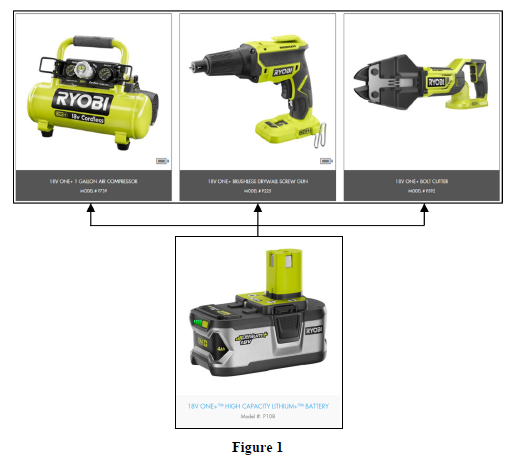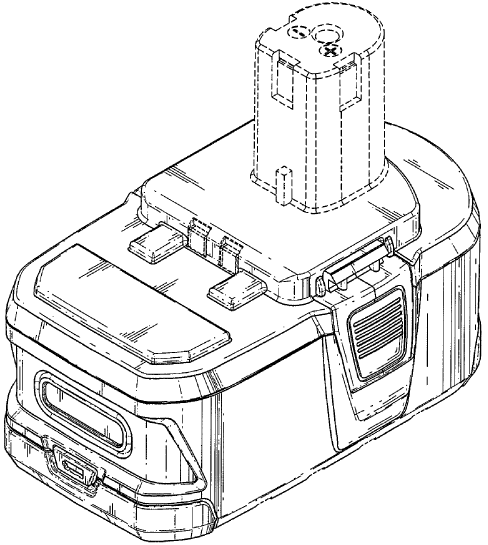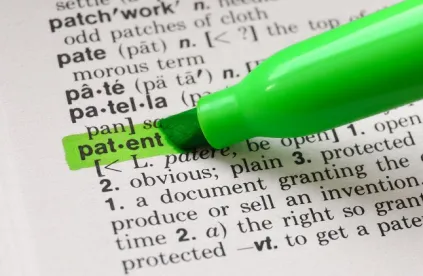Monday’s announcement of the institution of a section 337 investigation of Certain Batteries and Products Containing the Same, 337-TA-1244, is notable as the first time in recent memory that a battery company has sued in the US International Trade Commission (ITC) for design patent infringement. Battery patents typically cover new and useful features of a battery, e.g. a cathode composition, an electrode architecture, a battery housing, or management software. That which is patented is rarely visible on a battery or a product a consumer might buy. In this case, One World Technologies, Inc. and Techtronic Power Tools Technology Ltd. (“One World”) allege that a list of defendants infringe their battery patents by importing batteries that look like theirs.
The Facts Alleged
One World sells power drills, circular saws, and leaf blowers that include cordless, 18-volt, lithium-ion rechargeable batteries. In its ITC Complaint, One World requests general and specific exclusion orders and cease and desist orders based on US Design Patent Nos. D579,868 (the “’868 patent”), D580,353 (the “’353 patent”), and D593,944 (the “’944 patent”) against thirteen respondents.
These 18V ONE+® batteries can be used in One World’s RYOBI™ ONE+ SYSTEM®, shown below:

One World alleges that the respondents’ products “embody the specific visual battery pack housing designs which infringe the Asserted Patents” (emphasis added) such as the following design from the ’353 patent:

One World’s complaint does not mention what is inside defendant’s batteries, or even if they are actual lithium-ion batteries; just that they look like One World’s batteries.
Design Patents
US Patents come in one of three flavors: utility patents for protecting useful inventions; plant patents for protecting new plant varieties; and design patents for protecting the ornamental features of an invention. Design patents cost a fraction to procure when compared to utility patents. Aside from a few formalities, design patents are effectively just pictures of various views of an invention, with certain solid-lines noting what is claimed and certain dashed-lines noting what is not. It is the solid lines in the design patent that a jury, or in this case the ITC administrative law judge, would compare to an accused product to determine infringement. See our blog about the ordinary observer standard for determining design patent infringement.
Design patents currently have a 15-year patent term, shorter than the standard 20-year term for a utility patent. But given how inexpensive they are to obtain as compared to utility patents, the return-on-investment (ROI) for design patents is self-evident if a single design patent prevents a competitor from copying the patented product.
Valuable Patents
Battery companies have infrequently litigated in the ITC. However, the times are changing. Battery companies are, due in part to advances in electric vehicles, increasing in value and becoming more aggressive with their intellectual property rights.
For example, LG Chem and SKI exchanged ITC complaints within the past year related to battery patents covering technology in electric vehicles such as the Jaguar-I-PACE and Audi e-tron. In one, SKI initiated a complaint against LG Chem related to US Patent No. 10,121,994. In another, LG Chem asserted U.S. Patent Nos. 7,662,517; 7,638,241; 7,709,152; and 7,771,877, against SKI. These patents are directed to certain cathode active material compositions and also to the pouches in which certain lithium-ion batteries are sealed — technologies most electric vehicle owners will never see unless they disassembly their vehicle’ battery packs.
With this background, the complaint by One World for design patent infringement for the appearance of a battery is all the more notable. As another example of the general up-tick in battery litigation recently, see our blog about the injunctive relief a US battery company, Celgard, obtained against a Chinese company, Shenzhen Senior Technology Material Co Ltd., in the United Kingdom by way of recently passed trade secret laws.
Takeaways
If successful, One World could secure an import ban against its competitors, or force them to redesign their infringing batteries. It might also obtain damages or disgorgement of profits in the related district court proceeding. In either case, One World could produce a substantial ROI in their design patent. As a point of reference, in 2018, Apple won a half a billion-dollar judgment for infringement of a design patent covering the appearance of the iPhone. Will 2021 see a successful judgment for One World for the appearance of their battery? Stay tuned.





 />i
/>i

